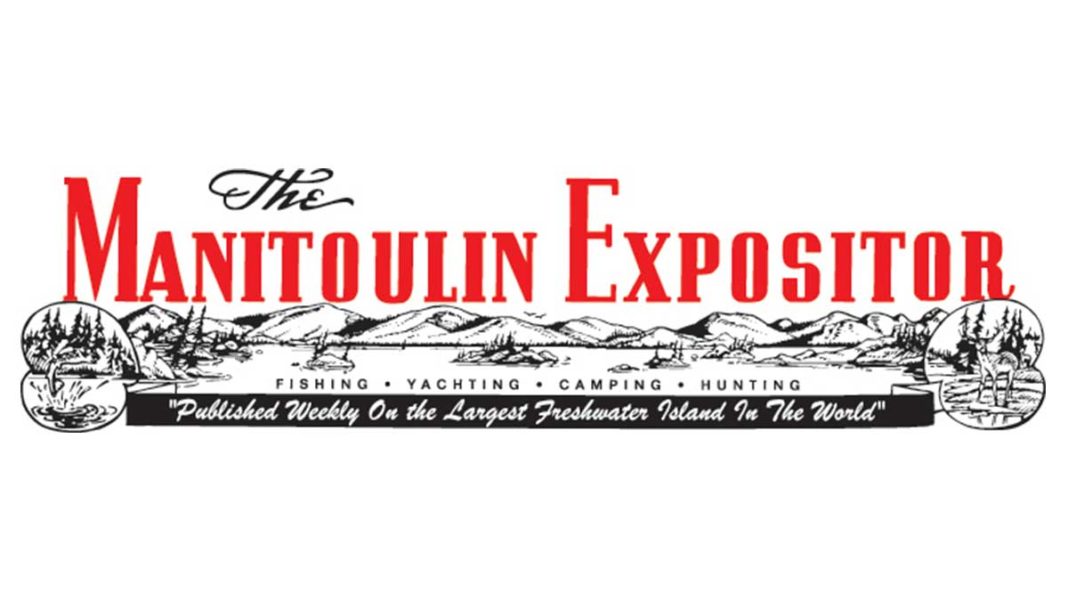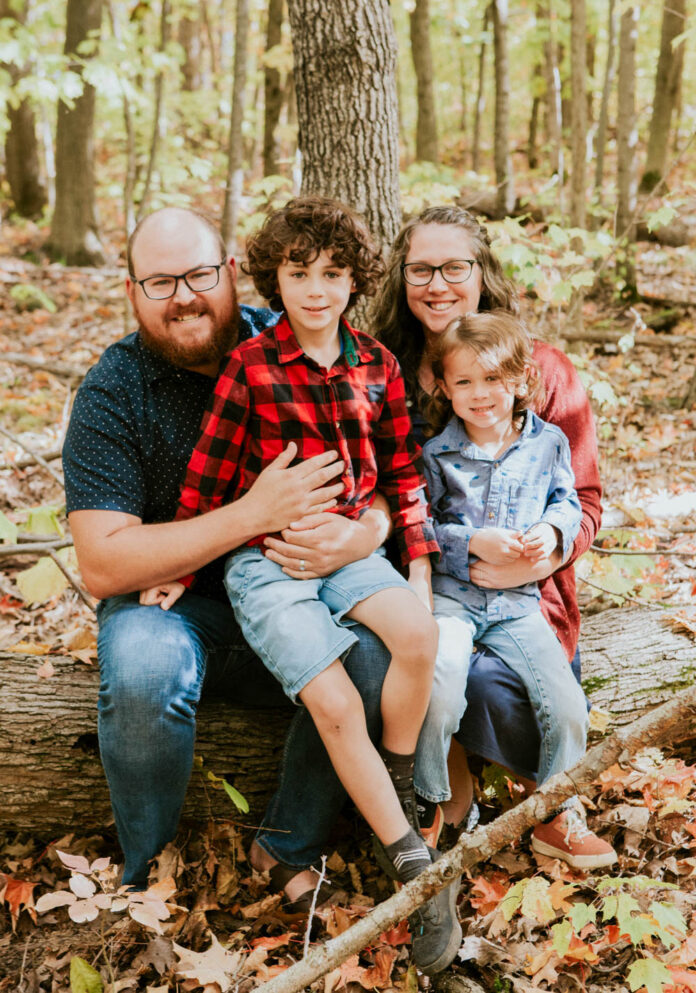MANITOULIN—The Niagara Escarpment Biosphere Network (NEBN) met with local First Nations individuals to preview photographer and NEBN board member Mark Zelinski’s 10th photography book, ‘Niagara Escarpment: Land Between Waters.’ Mr. Zelinski has travelled to capture cultural heritage sites, critical geological sites and many areas of biodiverse interest along the Niagara Escarpment.
Crafted from the retreat of ice sheets around 18,000 years ago, the Gorge boasts a unique forest ecosystem shaped by its height, closeness to the water and a preserved section of Carolinian forest. Beyond its natural beauty, the Niagara Escarpment serves as a breathtaking landscape and a crucial economic centre.
The Expositor spoke with Tom Hare, a citizen of M’Chigeeng First Nation and Indigenous sovereignty advocate, about some concerns that First Nations face when new organizations come to their territories. “Even though these designations are well-intentioned, they create an air of apprehension to access and use our traditional lands. A lot of people don’t understand what all of this means or entails. Indigenous usage of our lands is blanketed with layers of policies and regulations that do not respect our sovereignty. So, when we hear about new designations, we are right to be suspicious,” Mr. Hare stated. “We saw this with the Greenbelt and provincial parks that created designations that impede Indigenous land usage. More public access makes it difficult for us to go fast, do ceremonies or harvest. Indigenous people are economically repressed, so we worry about if we are going to be fined or charged and have to fight it in court.”
The Niagara Escarpment Commission, founded in 1973, is an agency of the Ontario government. The NEC applied to UNESCO in 1990 for the Niagara Escarpment Biosphere Reserve designation and published the first Niagara Escarpment Plan in 1985. This plan is reviewed and updated every five years, with the most recent version of the plan published in 2017. UNESCO reviewed the designation under the NEC in 2019 and found that the participation of diverse sectors needed to be improved, so a group of volunteers was tasked with forming an NGO. This is the origin story of the Niagara Escarpment Biosphere Network, a grassroots, independent, volunteer-based non-profit focused on building a network of First Nations, municipalities, non-profit organizations, scientists, academics and individuals seeking a more sustainable approach to caring for precious ecosystems.
The Niagara Escarpment Biosphere is overseen by the Niagara Escarpment Biosphere Network, which has collaboratively crafted an updated strategic management system in partnership with Plenty Canada. This network has formed a board of directors following a co-governance framework with Indigenous communities. Its diverse membership spans the length and breadth of the Niagara Escarpment, encompassing individuals from both its southern and northern regions. NEBN, established in 2022, marks a novel chapter in organizational history—a rejuvenation from a prior framework. Embracing co-governance, the principle of “two-eyed seeing,” and inclusive representation from both First Nations and non-native municipalities, its board is tasked with guiding the institution. This approach stands out; among the 19 biospheres, each with its distinct approach to collaborating with First Nations the Yukon biosphere notably operates under the sole leadership of First Nations.
“Those layers of authority, we are not a layer of authority; we seek new solutions from the collective. Extending the NEBN’s UNESCO designation to Manitoulin Island has the potential to help local municipalities, First Nations, non-profits, agricultural experts, and other organizations with a vested interest in preserving biodiversity and natural resources to foster lateral relationships with academics, scientists, and potential funding sources for applied research to build climate resilience and biodiversity protection,” CEO of Plenty Canada and board member of NEBN Larry McDermott said. “Too often, it’s been the case, even in initiatives that appear to be well-intentioned, that Indigenous people are left by the wayside. Our board has five Indigenous members. And all of us have experienced situations where expectations were not met. We don’t want to perpetuate that. Our framework for governance, if you want to call it that, or just getting things done, is to create ethical space based on ‘two-eyed seeing.’ We want to change how biospheres operate through accountability and holding ethical space.”
Larry McDermott, an Algonquin from Shabot Obaadjiwan First Nation, serves as the Executive Director of Plenty Canada. He’s actively engaged with various organizations, including the International Indigenous Forum for Biodiversity, Ontario Biodiversity Council, Ontario Professional Foresters Association, Healing Place partnership, and Niagara Escarpment Biosphere Network. He co-chairs the Lanark County Safety and Well-Being Plan. Previously, he held roles as a three-time mayor and council member of Lanark Highlands chaired the Rural Forum of the Federation of Canadian Municipalities, served as a Commissioner for the Ontario Human Rights Commission, contributed to species recovery teams, and represented Shabot Obaadjiwan First Nation in comprehensive claims. Larry, certified in tree marking and butternut assessment, holds multiple environmental certifications and was honored with an Honorary Doctorate of Laws from the University of Guelph. He studied under the late Algonquin Elder, Grandfather William Commanda, founder of the Circle of All Nations organization.
Biosphere reserves play a pivotal role in ensuring the region’s environmental, economic and social sustainability by promoting the responsible utilization of natural and human resources. These reserves are practical solutions for resolving land use conflicts and safeguarding biodiversity. By becoming part of national and international networks, a biosphere reserve gains access to vital information, expertise, support, and funding, fostering diverse local economies and revitalizing rural areas. They serve as frameworks guiding projects that enhance livelihoods and attract academic and government research, addressing local concerns. As learning sites, these reserves demonstrate conservation and sustainable development approaches, offering transferable lessons. Moreover, they accentuate the area’s uniqueness, nurturing a strong sense of place among residents and visitors. Biosphere reserve designation sparks awareness of environmental issues among locals and authorities, creating a focal point for stakeholder collaboration and volunteer engagement.
Charlene Winger-Jones and Norman Ragetlie co-chair NEBN as the first step in the ‘two-eyed seeing” framework. Ms. Winger-Jones is an elder, Hereditary Council member, Water Walker, and climate Reality Leader from Neyaashiinigmiing. Mr. Ragetlie recently retired as executive director of the Rural Ontario Institute, where he had also served as director of Policy and Stakeholder Engagement. In previous decades, he led a Community Economic Development unit with the Ontario Ministry of Agriculture and Rural Affairs. He was a practicing registered professional planner focused on natural heritage conservation and an award-winning participatory sustainable community development initiative in the Hamilton-Wentworth region. A lifelong volunteer, Norm served as chair of the Ontario Farmland Trust and was active in the local food cooperative movement; he is chair of the newly formed Intersections Wood Collaborative and a trail captain for the Bruce Trail Conservancy near his home in Owen Sound.
Mr. Ragetlie addressed the recent meeting, “I can understand that there might be a concern if there isn’t clarity about why we were there. This was an initial meeting with some of the contacts that Mr. Zelinski had made while photographing for his new book. I foresee that we will be hosting more meetings with all interested parties, beginning with First Nations leadership. UCCMM has asked us to come out and speak with them; though there is no date yet, we are looking forward to that opportunity. We are just a small group of volunteers, but we are interested in meeting with anyone who wants to collaborate with us.”
While the EBC and NEBN are forging a relationship, the organization’s purposes are within grassroots governance and an interest in sharing information. EBC is a land trust, whereas NEBN is an information and resource-sharing network. Neither the ECB nor NEBN formally endorse the proposed UNESCO Georgian Bay Geopark.
The Niagara Escarpment, a prominent geological feature in southern Ontario, is the primary among several similar formations in the region’s bedrock. Extending from the Niagara River to northern Michigan, it is the backbone for the Bruce Peninsula, Manitoulin and other islands north of Lake Huron. Additionally, it spans into New York State and Wisconsin, creating a rough circle around the Michigan structural basin within the bedrock.
From approximately 445 million years ago in the upper Ordovician to around 420 million years ago in the lower Silurian era, the rock layers of the Niagara Escarpment represent a 25-million-year period. The rock compositions differ on either side of the Escarpment: the area below and east predominantly consists of Ordovician limestone, while the region on and west mainly comprises Silurian dolostone. Initially referred to as the Silurian Escarpment, this distinction arises due to the geological makeup of the rock formations. The Niagara Escarpment is not formed by faulting. There is no displacement of the rock layers at the Escarpment, as shown by study or rock exposures and drill holes.






